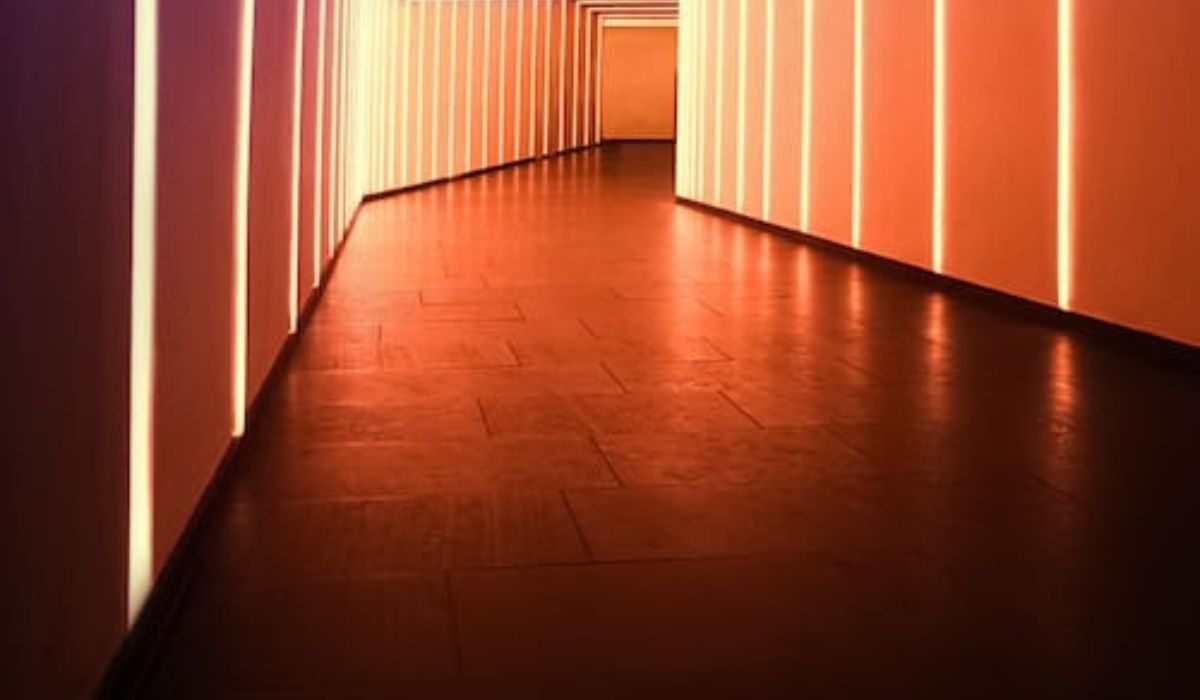In the world of flooring, red oxide stands out as a timeless option that has stood the test of time. Red oxide flooring, which is often associated with traditional aesthetics, adds a sense of heritage and warmth to spaces. This article delves into the rich tapestry of red oxide flooring, delving into its definition, manufacturing process, benefits, potential drawbacks and frequently asked questions to help homeowners, architects and design enthusiasts embrace this long-lasting flooring solution.
What is red-oxide flooring?
Red oxide flooring, also known as “terrazzo flooring” or simply “red floors,” is a type of flooring distinguished by its distinct reddish-brown colour. The colour is derived from iron oxide, a naturally occurring compound. The flooring is made of cement, red iron oxide, marble powder and other aggregates, resulting in a long-lasting and visually appealing surface. Pouring the mixture onto a prepared base, which is then levelled and polished to achieve a smooth finish, is the application process.
How is it manufactured?
To achieve the desired colour, texture and durability, red oxide flooring is manufactured using a meticulous combination of raw materials. Cement is the base binding material that gives the flooring its strength. The key component responsible for the distinctive colour, red iron oxide, is carefully measured and added to the mix. Marble powder improves the finish and adds to the lustre of the flooring. The mixture is then poured onto a levelled surface, allowed to cure and polished to reveal the red oxide flooring’s inherent beauty.
Advantages
Timeless aesthetic appeal
One of the most significant benefits of red oxide flooring is its timeless aesthetic appeal. The warm, earthy tones evoke a sense of tradition and authenticity, making it a favourite for spaces looking for a timeless charm. It blends in with a wide range of design styles, from rustic to contemporary and adds character to both residential and commercial settings.
Longevity and durability
Red oxide flooring is well-known for its durability and longevity. The combination of cement and iron oxide creates a strong surface that can withstand heavy foot traffic, making it ideal for high-traffic areas like hallways, entryways and commercial spaces. Red oxide flooring can retain its lustre for many years if properly maintained.
Cost effective
In comparison to some high-end flooring options, red oxide flooring is a more affordable option that does not sacrifice aesthetics or durability. This makes it an appealing option for cost-conscious homeowners and businesses seeking a stylish and long-lasting flooring solution without breaking the bank.
Customisation options
Red oxide flooring allows for customisation during the manufacturing process. The proportion of red iron oxide to other materials can be adjusted to achieve different shades of red, allowing homeowners to customise the flooring to their specific colour preferences. Furthermore, the polishing process can be altered to achieve different levels of shine, allowing for some degree of customisation in the final appearance.
Environmentally friendly
Red oxide flooring is made from natural materials such as cement, iron oxide and marble powder. When compared to some synthetic flooring materials, this makes it a more environmentally friendly option. The use of locally sourced materials reduces the environmental impact of transportation even further.
Disadvantages
Cracking
Despite its durability, red oxide flooring is prone to cracking, especially if the substrate or base on which it is installed is not properly prepared. To reduce the risk of cracks, adequate surface preparation and a well-engineered base are required.
Maintenance
While red oxide flooring is relatively low-maintenance, it does require regular cleaning and resealing to maintain its appearance and durability. Because of the porous nature of the material, it is prone to stains, emphasising the importance of prompt cleaning and sealing to avoid long-term damage.
Colour options
While red oxide flooring allows for customisation in terms of achieving different shades of red, it does limit colour options when compared to other flooring materials. This may be a disadvantage for those looking for a broader range of colour options to match specific design preferences.
Variation in initial Appearance
The appearance of red oxide flooring immediately after installation may differ from the final, polished look. The initial appearance may appear dull or uneven and polishing is required to reveal the true colours and achieve a uniform finish.
Why choose red-oxide flooring?
Red oxide flooring tiles provide a plethora of design options, blending traditional charm with contemporary flair. The tiles can be made in a variety of sizes, ranging from large format to intricate mosaic patterns, allowing homeowners and designers to create one-of-a-kind and personalised flooring designs. Geometric patterns, floral motifs and border designs are popular options for adding an artistic touch to rooms. The tiles can be laid in a variety of configurations, including herringbone, basketweave and straight set, giving them versatility in achieving a variety of aesthetics. Floors are transformed into captivating canvases that tell a story of heritage and individual style thanks to the inherent warmth of red oxide and the creative potential of tile design.
Red oxide flooring stands out from the crowd due to its distinct aesthetic appeal and one-of-a-kind composition. Red oxide flooring, as opposed to traditional ceramic tiles or marble flooring, provides a warmer and more rustic ambiance. While hardwood floors provide a natural warmth, red oxide flooring provides a similar feel while being more durable and easy to maintain. Red oxide flooring is frequently less expensive than high-end options such as natural stone or hardwood. Furthermore, the customisable nature of red oxide enables a personal touch that may be difficult to achieve with mass-produced flooring materials.
For generations, red oxide flooring has been a staple in Indian homes, deeply rooted in tradition and cultural aesthetics. The rich tapestry of Indian interiors is complemented by the warmth of red oxide floors, creating a cosy and inviting atmosphere. Red oxide flooring can be found in a variety of settings, from traditional rural homes to modern city dwellings. It blends in with a variety of design styles, from traditional to contemporary, making it a versatile choice for Indian homeowners who value both heritage and innovation. Its adaptability to various climatic conditions, combined with its ease of maintenance, adds to its popularity in Indian households.
Red oxide is a testament to the enduring allure of classic design in the grand narrative of flooring options. Its rich, earthy tones and customisable patterns evoke a timeless elegance that blends tradition and modernity. Red oxide flooring, whether in the form of tiles or traditional poured applications, serves as a canvas that reflects a space’s personality and heritage. Red oxide flooring, which continues to grace Indian homes with its warm embrace, is a symbol of resilience, sustainability and the enduring beauty of a flooring choice that transcends generations. Red oxide flooring is a celebration of design that stands the test of time, whether in the heart of a traditional home or the modern contours of urban living.
FAQs
Is red oxide flooring suitable for all types of spaces?
Red oxide flooring is versatile and can be used in various spaces, including residential homes, commercial establishments and cultural institutions. It is particularly well-suited for areas with high foot traffic.
Can red oxide flooring be installed in kitchens and bathrooms?
While red oxide flooring can be installed in kitchens and bathrooms, it requires proper sealing to prevent water penetration. Regular maintenance and prompt cleaning of spills are essential in these areas to maintain the flooring's integrity.
How do I maintain red oxide flooring?
Regular sweeping and damp mopping are effective in maintaining red oxide flooring. Stains should be promptly cleaned to prevent long-term damage. Periodic resealing may be necessary to preserve the flooring's appearance and durability.
Does red oxide flooring fade over time?
Red oxide flooring, when properly maintained, does not fade over time. The colour may evolve slightly with exposure to sunlight, but regular cleaning and occasional resealing can help retain its original vibrancy.
Can red oxide flooring be combined with underfloor heating systems?
Yes, red oxide flooring is compatible with underfloor heating systems. The flooring's composition allows for efficient heat conduction, making it a suitable option for spaces where underfloor heating is desired.
How can I address cracks in red oxide flooring?
Preventing cracks in red oxide flooring involves proper surface preparation during installation. If cracks do occur, consulting with flooring professionals is advisable to assess the extent of the damage and determine appropriate repair measures.
Can red oxide flooring be installed over existing flooring materials?
In some cases, red oxide flooring can be installed over existing flooring materials. However, thorough assessment and preparation of the existing surface are crucial to ensure proper adhesion and minimise the risk of issues such as cracking or unevenness.
Does red oxide flooring emit any harmful substances?
Red oxide flooring, composed of natural materials like cement, iron oxide and marble powder, typically does not emit harmful substances. It is considered a safe and environmentally friendly flooring option.
Can red oxide flooring be polished to achieve a glossy finish?
Yes, red oxide flooring can be polished to achieve varying levels of shine, including a glossy finish. The polishing process enhances the flooring's appearance and contributes to its durability.
Is red oxide flooring suitable for outdoor spaces?
Red oxide flooring is primarily designed for indoor use. While it can be used in covered outdoor spaces, exposure to harsh weather conditions may impact its longevity and appearance. Regular maintenance and sealing are essential for outdoor installations.
| Got any questions or point of view on our article? We would love to hear from you. Write to our Editor-in-Chief Jhumur Ghosh at jhumur.ghosh1@housing.com |

Upasana Mandhata, currently in her final year of Law, is pursuing a BA LLB Degree at VIT University Chennai. Her interest in content creation dates back to her school and college years when she discovered a writing passion. Drawing from personal experiences, her writing style has been shaped by her journey and encounters. She enjoys experimenting with new recipes, painting, or swimming while clocking out of work time.












